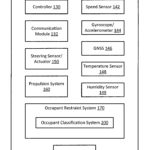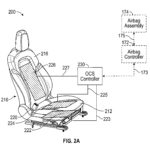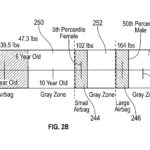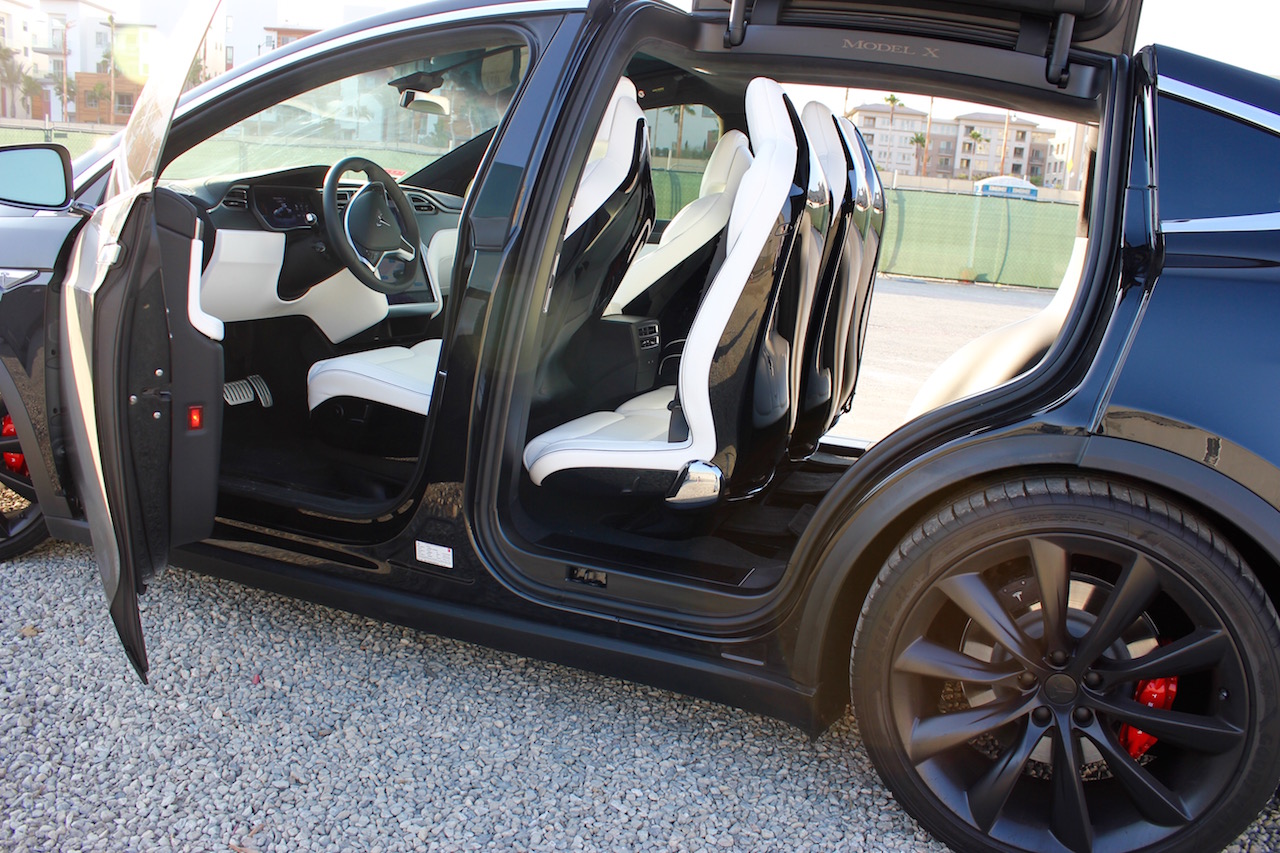
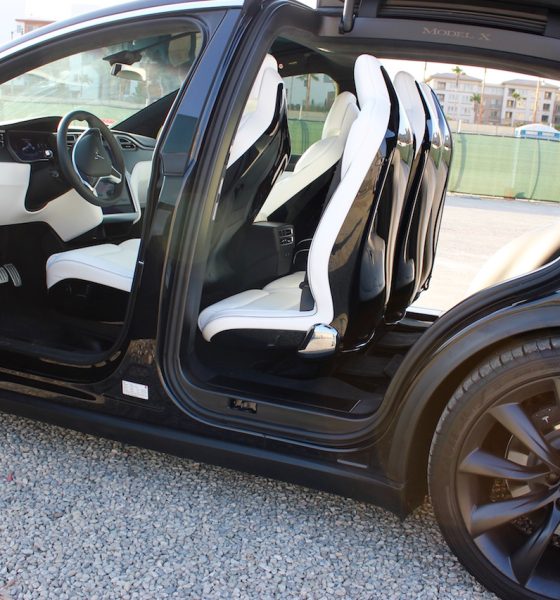
News
Tesla designs safer airbag deployment system through seat sensors in new patent
Tesla’s electric cars are among the safest on the road, so much so that the Model 3, Model S, and Model X are among the NHTSA’s top vehicles with the lowest probability of injury in the event of an accident. Thanks to Tesla’s use of ultra-high-strength steel and aluminum, as well as the vehicles’ extra large crumple zones due to their all-electric design, the company’s electric cars are capable of protecting their occupants when untoward events happen on the road.
If a recently published patent application is any indication, though, it appears that Tesla is exploring more ways to make its vehicles even safer. Tesla’s recent patent, titled “Sensors for Vehicle Occupant Classification Systems and Methods,” taps into the company’s prowess in tech by using a system that alows cars to detect and/or classify their occupants based on readings from a series of sensors in the seats. With such a system in place, safety features could activate in a way that is optimized for passengers.
- Diagrams depicting Tesla’s “Sensors for Vehicle Occupant Classification Systems and Methods” patent. (Credit: US Patent Office)
- Diagrams depicting Tesla’s “Sensors for Vehicle Occupant Classification Systems and Methods” patent. (Credit: US Patent Office)
- Diagrams depicting Tesla’s “Sensors for Vehicle Occupant Classification Systems and Methods” patent. (Credit: US Patent Office)
Diagrams depicting Tesla’s “Sensors for Vehicle Occupant Classification Systems and Methods” patent. (Credit: US Patent Office)
Tesla notes that cars on the road today are becoming safer overall, thanks to systems that monitor operations while the vehicle is in motion and features that provide coordinated alerts and assistance as needed. While such processes make vehicles safe, though, Tesla states that there is still a large area for improvement. One such area, according to the electric car maker, is in the way airbags deploy in the event of an accident.
“Difficulties remain in reliably detecting the presence of vehicle occupants and accurately classifying them as children, relatively small adults, and/or according to other classifications, and particularly in differentiating between classifications. Accurate classification can be critical when the vehicle is attempting to assist or enact safety measures to protect the occupant.
“In particular, airbag deployment can be adjusted to reduce risk of injury caused by the airbag while maintaining safety of the occupant during a collision. However, while reduced-force airbag deployment is recommended for relatively small adult females, it is not recommended for young children, even though the young children can reach heights and weights approaching those of the relatively small adult females. Thus, there is a need for an improved methodology to provide reliable and accurate vehicle occupant classification, particularly in the context of controlling an occupant restraint system that can apply force to an operator of the vehicle.”
Tesla’s patent application explores the use of sensors placed on the vehicle’s seats that enable the cars to classify their occupants. By classifying the size, weight, and body type (among others) of a passenger, the car would be able to deploy airbags in the safest way possible during an accident. Tesla describes this system as follows.
“In accordance with various embodiments of the present disclosure, occupant detection and classification may be provided by an occupant weight sensor, an occupant presence sensor, and a logic device configured to convert sensor signals provided by the occupant weight sensor and the occupant presence sensor into an estimated occupant weight and an occupant presence response, which may be used together to reliably detect and classify the occupant with increased sensitivity, accuracy, and granularity compared to conventional detection systems.
“In particular, embodiments of the present occupant classification system may be employed to detect and differentiate a child from a relatively small woman or man and disable, partially enable, or fully enable an airbag as appropriate. Such occupant classification systems may be implemented with various types of user feedback mechanisms, including reporting detections and classifications both locally and remotely, such as to a smartphone, for example, and reporting potentially unsafe conditions and/or undesired operation of the vehicle, as described herein.”
With this system in place, Tesla’s electric cars would be even safer than they already are. If any, this would widen the gap further between Tesla’s vehicles and conventional cars, many of which are bogged down in frontal collisions due to the presence of a large, heavy engine under the hood. That said, this recent patent application all but emphasizes Tesla’s proactive nature and the company’s tendency to always make efforts to improve.
This particular nature was emphasized by Elon Musk on Twitter last October, when he explained that there is “no such thing” as a “full refresh” or even a model year at Tesla. In his tweet, Musk stated that all the company’s vehicles are partially upgraded every month “as soon as a subsystem is ready for production,” thereby ensuring buyers that they are getting the best vehicles available at their time of purchase. This, coupled with Tesla’s trademark over-the-air updates — which give new features from driver assist functions such as Navigate on Autopilot, to fun, quirky things like the Romance Mode Easter Egg — truly make the company’s electric cars unique on the road.
The full text of Tesla’s recent patent application could be accessed here.

News
Tesla FSD Supervised ride-alongs in Europe begin in Italy, France, and Germany
The program allows the public to hop in as a non-driving observer to witness FSD navigate urban streets firsthand.

Tesla has kicked off passenger ride-alongs for Full Self-Driving (Supervised) in Italy, France and Germany. The program allows the public to hop in as a non-driving observer to witness FSD navigate urban streets firsthand.
The program, detailed on Tesla’s event pages, arrives ahead of a potential early 2026 Dutch regulatory approval that could unlock a potential EU-wide rollout for FSD.
Hands-Off Demos
Tesla’s ride-along invites participants to “ride along in the passenger seat to experience how it handles real-world traffic & the most stressful parts of daily driving, making the roads safer for all,” as per the company’s announcement on X through its official Tesla Europe & Middle East account.
Sign-ups via localized pages offer free slots through December, with Tesla teams piloting vehicles through city streets, roundabouts and highways.
“Be one of the first to experience Full Self-Driving (Supervised) from the passenger seat. Our team will take you along as a passenger and show you how Full Self-Driving (Supervised) works under real-world road conditions,” Tesla wrote. “Discover how it reacts to live traffic and masters the most stressful parts of driving to make the roads safer for you and others. Come join us to learn how we are moving closer to a fully autonomous future.”
Building trust towards an FSD Unsupervised rollout
Tesla’s FSD (Supervised) ride-alongs could be an effective tool to build trust and get regular car buyers and commuters used to the idea of vehicles driving themselves. By seating riders shotgun, Tesla could provide participants with a front row seat to the bleeding edge of consumer-grade driverless systems.
FSD (Supervised) has already been rolled out to several countries, such as the United States, Canada, Australia, New Zealand, and partially in China. So far, FSD (Supervised) has been received positively by drivers, as it really makes driving tasks and long trips significantly easier and more pleasant.
FSD is a key safety feature as well, which became all too evident when a Tesla driving on FSD was hit by what seemed to be a meteorite in Australia. The vehicle moved safely despite the impact, though the same would likely not be true had the car been driven manually.
News
Swedish union rep pissed that Tesla is working around a postal blockade they started
Tesla Sweden is now using dozens of private residences as a way to obtain license plates for its vehicles.

Two years into their postal blockade, Swedish unions are outraged that Tesla is still able to provide its customers’ vehicles with valid plates through various clever workarounds.
Seko chairman Gabriella Lavecchia called it “embarrassing” that the world’s largest EV maker, owned by CEO Elon Musk, refuses to simply roll over and accept the unions’ demands.
Unions shocked Tesla won’t just roll over and surrender
The postal unions’ blockade began in November 2023 when Seko and IF Metall-linked unions stopped all mail to Tesla sites to force a collective agreement. License plates for Tesla vehicles instantly became the perfect pressure point, as noted in a Dagens Arbete report.
Tesla responded by implementing initiatives to work around the blockades. A recent investigation from Arbetet revealed that Tesla Sweden is now using dozens of private residences, including one employee’s parents’ house in Trångsund and a customer-relations staffer’s home in Vårby, as a way to obtain license plates for its vehicles.
Seko chairman Gabriella Lavecchia is not pleased that Tesla Sweden is working around the unions’ efforts yet again. “It is embarrassing that one of the world’s largest car companies, owned by one of the world’s richest people, has sunk this low,” she told the outlet. “Unfortunately, it is completely frivolous that such a large company conducts business in this way.”
Two years on and plates are still being received
The Swedish Transport Agency has confirmed Tesla is still using several different workarounds to overcome the unions’ blockades.
As noted by DA, Tesla Sweden previously used different addresses to receive its license plates. At one point, the electric vehicle maker used addresses for car care shops. Tesla Sweden reportedly used this strategy in Östermalm in Stockholm, as well as in Norrköping and Gothenburg.
Another strategy that Tesla Sweden reportedly implemented involved replacement plates being ordered by private individuals when vehicles change hands from Tesla to car buyers. There have also been cases where the police have reportedly issued temporary plates to Tesla vehicles.
News
Czech Deputy excited for Tesla FSD, hints at Transport Committee review
The ANO party lawmaker shared his thoughts about FSD in a post on social media platform X.
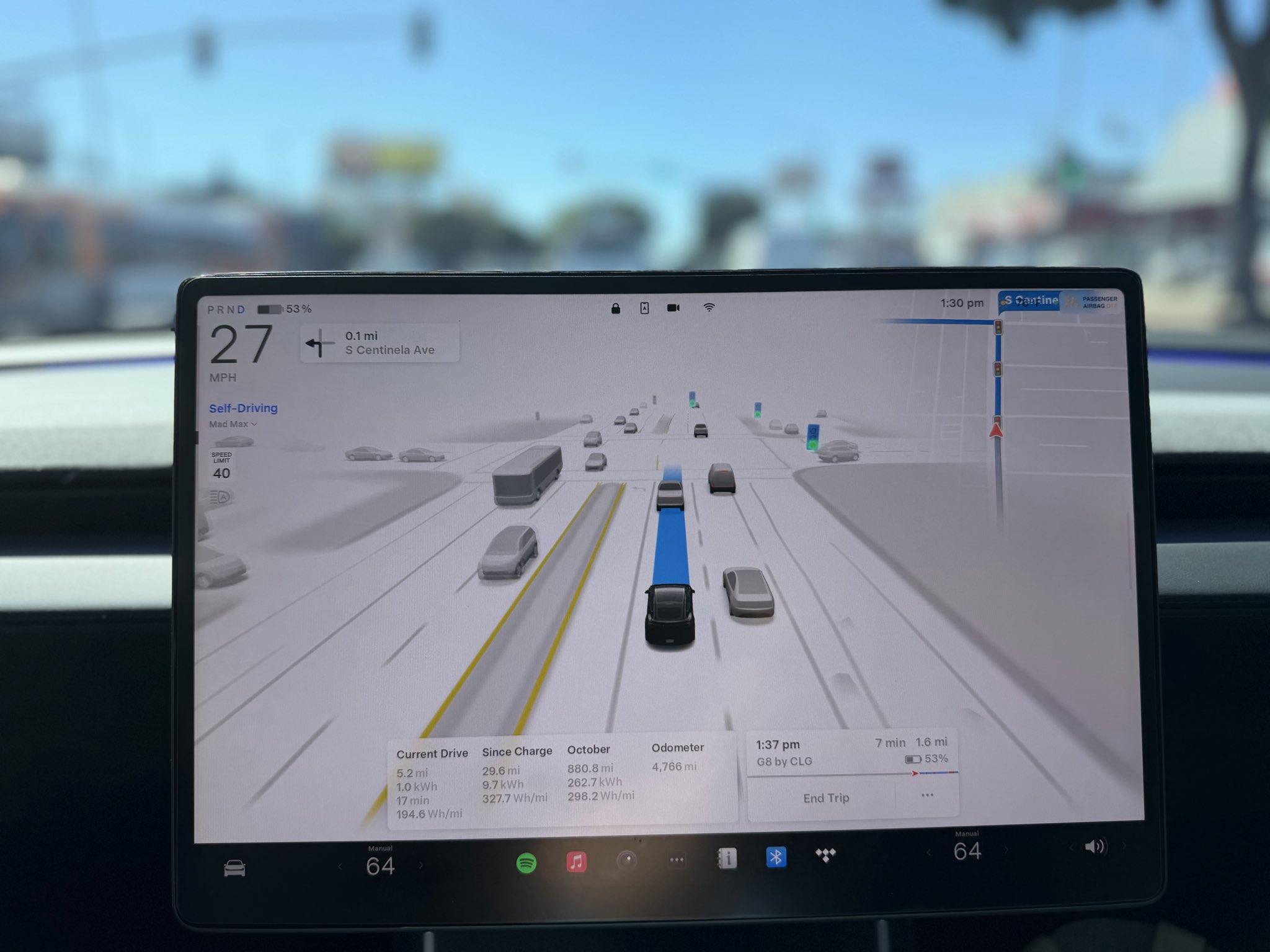
Martin Kolovratník, a Czech Republic Chamber of Deputies member, has expressed his excitement for Tesla’s Full Self-Driving (FSD) after an apparent constituent called for a quick approval for the advanced safety system.
The ANO party lawmaker, who drives both diesel and EV, shared his thoughts about the matter in a post on social media platform X.
The official’s initial statements
Kolovratník kicked off the exchange with a post outlining his coalition’s efforts to scrap highway toll exemptions for electric vehicles and plug-ins starting in 2027.
“Times have changed. Electric vehicles are no longer a fringe technology, but a full-fledged part of operations. And if someone uses the highway network, they should follow the same rules as everyone else. That’s the basis of fairness,” he wrote.
He emphasized equity over ideology, noting his personal mix of diesel and electric driving. “For this reason, there is no reason to continue favoring one technology at the expense of another… It’s not about ideology, it’s about equal conditions. That’s why we clearly agreed within the new coalition: the exemption for electric vehicles and plug-ins will end in 2027. The decision is predictable, understandable, and economically sound.”
Tesla FSD enthusiasm
The conversation pivoted to Tesla’s FSD when X user @robotinreallife, who seems to be one of the official’s constituents, replied that other matters are more important than ending highway exemptions for EVs.
“I’m happy to pay for the highway, but I have a question about a much more fundamental matter: The Netherlands will approve the operation of Tesla FSD in February 26, a technology that has been proven to reduce accidents. The Czech Republic has the option to immediately recognize this certification. Do you plan to support this step so that we don’t unnecessarily delay?” the X user asked.
Kolovratník responded promptly, sharing his own excitement for the upcoming rollout of FSD. “I know about it. I like it and it seems interesting to me. Once we set up the committees and subcommittees, we’ll open it right away in that transport one. Thanks for the tip, I’ll deliver the report,” the official noted in his reply on X.
Kolovratník’s nod to FSD hints at the system’s potentially smooth rollout to Czechia in the coming year. With the Netherlands possibly greenlighting FSD (Supervised) in early 2026, Kolovratník’s commitment could accelerate cross-border certification, boosting FSD’s foray into Europe by a notable margin.
